

The feasibility of adding wood quality traits as selection criteria in the Galician Pinus pinaster Aiton breeding program: case study
- Esteban Torres-Sánchez
- Raquel Díaz

Population-specific climate sensitive top height curves and their applications to assisted migration
- Gregory A. O’Neill
- Barb R. Thomas

Canopy nitrogen application effects on Quercus petraea L. and Fagus sylvatica L. ring width and wood density
- Daniel Minikaev
- Maurizio Ventura
- Camilla Wellstein

Patterns of deadwood amount and deadwood diversity along a natural forest recovery gradient from agriculture to old-growth lowland tropical forests
- Ana Falconí-López
- Nina Grella
- Jörg Müller

Size-dependent growth strategy and allometry, but not complementarity, as major drivers of fine-root biomass and productivity across warm-temperate forests
- Wenhao Miao
- Xiangping Wang

Structural diversity and carbon stock of forest stands: tradeoff as modified by silvicultural thinning
- Hans Pretzsch
- Torben Hilmers

Enhanced interannual drought resilience in mixed stands: unveiling possible complementarity effects between tree species of the Spanish Northern Plateau
- Przemysław A. Jankowski
- Rafael Calama
- Marta Pardos

Spatial differentiation of the leaf area index in forests in ecological transition zones and its environmental response
- Chengzhang Zhao

Forest fuel extraction does not affect macrolichens on deadwood substrates, but only if coarse woody debris is not collected
- Jenna Purhonen
- Aleksi Nirhamo

Production of greenhouse gases by logging residue in boreal clear-cut forests
- Antti Laihonen
- Sanni L. Aalto
- Marja Tiirola

Genetic variation of English yew ( Taxus baccata L.) in the Bavarian Forest National Park, Germany
- Sayed Jalal Moosavi
- Katharina Birgit Budde
- Oliver Gailing

Organic soil greenhouse gas flux rates in hemiboreal old-growth Scots pine forests at different groundwater levels
- Valters Samariks
- Laura Ķēniņa
- Āris Jansons

Understanding the influence of tree size distribution on the CTL harvesting productivity of two different size harvesting machines
- Simon Ackerman
- James Bekker
- Bruce Talbot

Vertical variation in swelling properties of Norway spruce bark depending on tree age and bark moisture content
- Agnieszka Płachta
- Kelly Cristina Tonello

Resin tapping of Atlantic pine forests: towards an optimized use of stimulant pastes over the season
- Margarita Lema
- Roberto Touza

Genetic diversity and the origin of Taiwania cryptomerioides plantations in South China: implications for conservation and restoration
- Mengyun Qin
- Ningning Zhang

Effects of plant leaf traits, abundance and phylogeny on differentiation of herbivorous insect assemblages in Mediterranean mixed forest
- Jesús Mª Bastida
- José L. Garrido
- Julio M. Alcántara

Effects of tree vigor, competition and stand conditions on branch diameter for mixed plantations of Fraxinus mandshurica Rupr. and Larix olgensis Henry in Northeast China
- Xinyang Zou

Soil PhytOC accumulation of Masson pine forests in Southwest China
- Linjiao Wang
- Maoyin Sheng

Physical decomposition stage and ergosterol content predict the chemical composition of downed dead wood in Mediterranean dehesas
- Estefanía Micó
- Martin Aguirrebengoa
- Antonio Sánchez

Augmented reality for measuring diameter at breast height using the iPhone measure app: outcomes on tree- and stand-level estimates of basal area in a Carpathian mixed forest
- Andrei Ioan Apăfăian
- Andrei Avasiloaie
- Maria Magdalena Vasilescu

Simulating cable corridors based on terrestrial LiDAR data
- Carl O. Retzlaff
- Christoph Gollob
- Andreas Holzinger

Stand-level sampling designs for bark stripping caused by red deer ( Cervus elaphus L.): simulation studies based on nine fully censused stands
- Christoph Hahn
- Sonja Vospernik

The illegal trade in rosewood in Indonesia
- Vincent Nijman

Riparian buffer zones in production forests create unequal costs among forest owners
- Tristan R. M. Bakx
- Cecilia Akselsson
- Renats Trubins

Risk assessment of habitat suitability decline for the endangered riparian tree Pterocarya tonkinensis (Juglandaceae): conservation implications
- Łukasz Walas
- Do Quang Tung
- Hoàng Văn Sâm

Mechanisms shaping the functional diversity of birds’ composition in the primeval forest ecosystem of the Białowieża National Park
- Oliwia Karpińska
- Katarzyna Kamionka-Kanclerska
- Dorota Czeszczewik

A remote sensing assessment of oak forest recovery after postfire restoration
- L. F. Lopes

Analyzing the environmental risk factors of European spruce bark beetle damage at the local scale
- Langning Huo
- Henrik Jan Persson
- Eva Lindberg

Carbon and nitrogen, humic and labile fractions in soil under clonal eucalyptus stands from cerrado
- Wendel dos Santos Moraes
- Luiz Fernandes Silva Dionisio
- Cristiano Bueno de Moraes

Exploring the effects of different fertilizer application durations on the functional microbial profiles of soil carbon and nitrogen cycling by using metagenomics in Paulownia plantations in a subtropical zone

Limited seed dispersal, allelopathy and unfavorable microclimatic conditions prevent the recovery of oak forests within Eucalyptus plantations
- Ernesto I. Badano
- Pablo Siller-Clavel

Genetic origin of two Italian provenances I11 and I15 compared to possible eight American IUFRO provenances of Douglas fir ( Pseudotsuga menziesii (Mirb.) Franco) from North America
- Anna De Rogatis
- Fulvio Ducci
- Guia Giovannelli

Forest history from a single tree species perspective: natural occurrence, near extinction and reintroduction of European yew ( Taxus baccata L.) on the Darss-Zingst peninsula, southern Baltic Sea coast
- Knut Kaiser
- Martin Theuerkauf
- Annette Beil

Efficiency analysis and CO 2 emission reduction strategies in the US forest sector: a data envelopment analysis approach
- Alireza Amirteimoori
- Majid Zadmirzaei
- Arash Amirteimoori

Divergent growth and responses of conifer and broad-leaved trees to warming-drying climate in a semi-arid region, northern China
- Zhenju Chen

Drivers of intraspecific variation in fecundity in rowan ( Sorbus aucuparia )
- Katarzyna Kondrat
- Michał Bogdziewicz
- Magdalena Żywiec

The effects of canopy gaps on soil nutrient properties: a meta-analysis
- Mengting Hou
- Guangqi Zhang

Community forest dependency: re-examining established thoughts with empirical evidence from Eastern India
- Somnath Ghosal
- Tarun Goswami

Ecotypic variation in multiple traits of European beech: selection of suitable provenances based on performance and stability
- Katharina J. Liepe
- Ernst van der Maaten
- Mirko Liesebach

Ectomycorrhizal trees enhanced water-holding capacity in forest ecosystems in northeastern China
- Huimei Wang

Association of Dryocola boscaweniae , Gibbsiella greigii and Gibbsiella quercinecans with oak decline in Iran
- Mohammad-Hossein Araeinejhad
- Nargues Falahi Chrakhabi
- Carrie Brady

Xylem adjustment and growth response of early- and late-successional tree species to rapid warming
- Liangjun Zhu
- Paolo Cherubini

Marginal water use efficiencies of different plant functional types along an elevation gradient in subalpine regions
- Biying Zhai
- Shouqin Sun

Allometric equations to calculate living and dead fuel loads in Mediterranean species
- Leyre Deltell
- Victor Manuel Santana
- M. Jaime Baeza

Intraspecific variability in cold hardiness of Taurus cedar ( Cedrus libani A. Rich.) in Türkiye
- Akkın Semerci
- Carlos A. Gonzalez-Benecke

Dust captured by a canopy and individual leaves of trees in the tropical mixed deciduous forest: Magnitude and influencing factors
- Arika Bridhikitti
- Pawaporn Khumphokha
- Suphat Prasopsin

Availability and mobilization of forest resources in Sweden
- Andreas Eriksson
- Jeannette Eggers
- Eva-Maria Nordström

Limitations of estimating branch volume from terrestrial laser scanning
- Christopher Morhart
- Zoe Schindler
- Thomas Seifert

Radial increment dynamics of Maritime pine ( Pinus pinaster Ait.) in pure and mixed stands with Scots pine ( Pinus sylvestris L.) under changing environmental conditions
- Ali Askarieh
- Miren del Río
- Felipe Bravo

- Find a journal
- Publish with us
- Track your research
- Search Menu
Advance articles
- Editor's Choice
- Original Articles
- Author Guidelines
- Submission Site
- Open Access
- About Forestry
- About the Institute of Chartered Foresters
- Editorial Board
- Advertising and Corporate Services
- Journals Career Network
- Self-Archiving Policy
- Dispatch Dates
- Journals on Oxford Academic
- Books on Oxford Academic
Using winter diet composition and forage plant availability to determine browse selection and importance for moose ( Alces alces ) in a landscape modified by industrial forestry
- View article
- Supplementary data

Sustainability and drivers of Populus tremuloides regeneration and recruitment near the southwestern edge of its range
Regional differences in stem form between southern and northern red spruce ( picea rubens sarg.) populations, field estimation of fallen deadwood volume under different management approaches in two european protected forested areas, the impact of natural constraints in linear regression of log transformed response variables, estimating the timber value of a forest property using geographically balanced samples and unoccupied aerial vehicle data, volume prediction of young improved sitka spruce trees in great britain through bayesian model averaging, acute and chronic oak decline in urban and forest ecosystems in southern italy, influence of reforestation tree species on decomposition of larch stumps and coarse roots: role of wood microbial communities and soil properties, post-harvest regeneration is driven by ecological factors rather than wood procurement intensity in eastern canadian forests, correction to: relating soil moisture and sentinel-2 vegetation index patterns to spruce bark beetle infestations prior to outbreak, computation of prediction intervals for forest aboveground biomass predictions using generalized linear models in a large-extent boreal forest region, tree belowground biomass in congo basin forests: allometric equations and scaling with aboveground biomass, analysis of the spatio-temporal dynamics of buxus hyrcana pojark defoliation using spaceborne satellite data, relating soil moisture and sentinel-2 vegetation index patterns to spruce bark beetle infestations prior to outbreak, a bootstrap-based approach to combine individual-based forest growth models and remotely sensed data, the weak genetic structure of melolontha melolontha (l.) and melolontha hippocastani (fabr.), two important forest pests, indicates their large population sizes and effective gene flow, height increment patterns in pinus pinaster seedlings emerging in naturally regenerated gaps, comparing the effects of ground cultivation and protection against browsing upon the natural regeneration of scots pine and birch in a caledonian pinewood, modeling basal area yield using simultaneous equation systems incorporating uncertainty estimators, more water, less light: how to improve silver fir seeding to convert norway spruce monocultures into mixed stands in a drier region of germany, when economically optimal is ecologically complicated: modeling tree-by-tree cutting decisions to maximize financial returns from northern hardwood stands, modeling a new taper curve and form factor of tree branches using terrestrial laser scanning, development and implementation of a stand-level satellite-based forest inventory for canada, examining the transferability of height–diameter model calibration strategies across studies, assessing the potential of synthetic and ex situ airborne laser scanning and ground plot data to train forest biomass models, a method for identifying and segmenting branches of scots pine ( pinus sylvestris l.) trees using terrestrial laser scanning, growth and quality of 16-year-old sessile oak ( quercus petraea (matt.) liebl.) planted in traditional and alternative row planting patterns, the effects of arginine phosphate (argrow® granulat) on growth of scots pine and norway spruce seedlings planted in varying soil layer structures simulating site preparation, predicting net growth rates in boreal forests using landsat time series and permanent sample plot data, are high-severity burns in alpine beech forests related to eruptive fire behavior, nothofagus pumilio regeneration failure following wildfire in the sub-antarctic forests of tierra del fuego, argentina, leaf litter combustion properties of central european tree species, canopy and surface fuel estimations using rpas and ground-based point clouds, the effect of dissolved char on microbial activity in an extract from the forest floor, email alerts.
- Recommend to your Library
Affiliations
- Online ISSN 1464-3626
- Print ISSN 0015-752X
- Copyright © 2024 Institute of Chartered Foresters
- About Oxford Academic
- Publish journals with us
- University press partners
- What we publish
- New features
- Open access
- Institutional account management
- Rights and permissions
- Get help with access
- Accessibility
- Advertising
- Media enquiries
- Oxford University Press
- Oxford Languages
- University of Oxford
Oxford University Press is a department of the University of Oxford. It furthers the University's objective of excellence in research, scholarship, and education by publishing worldwide
- Copyright © 2024 Oxford University Press
- Cookie settings
- Cookie policy
- Privacy policy
- Legal notice
This Feature Is Available To Subscribers Only
Sign In or Create an Account
This PDF is available to Subscribers Only
For full access to this pdf, sign in to an existing account, or purchase an annual subscription.
May 14, 2024
An Autonomous Logging Machine Could Make Forestry Safer
Forestry is deadly. Could automating some logging tasks help?
By Susan Cosier
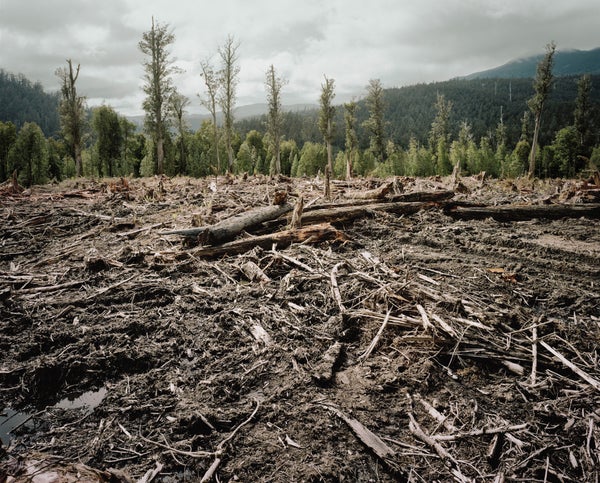
Michael Hall/Getty Images
The first autonomous logging machine rumbled down a Swedish forest path and scanned for stacked logs to transport. It then scooped them up with a crane and loaded them onto its trailer. A new study of the truck-size robot, called a forwarder, suggests it could help forest workers with at least some deadly jobs.
“It’s the first trial for us to see that the machine we built is perhaps capable of doing what we were dreaming it could do,” says Pedro La Hera, a roboticist at the Swedish University of Agricultural Sciences and lead author of the study, published in the Journal of Field Robotics .
Logging jobs are often demanding, requiring operators to multitask and endure nearly constant vibration while operating logging vehicles. Fatigued foresters don’t always pay attention to other foliage in the area, the researchers say, and can damage the ecosystems around them. Logging is also dangerous; in the U.S., it has one of the highest fatality rates of any industry.
On supporting science journalism
If you're enjoying this article, consider supporting our award-winning journalism by subscribing . By purchasing a subscription you are helping to ensure the future of impactful stories about the discoveries and ideas shaping our world today.
Roboticists, software engineers and forestry scholars in Sweden set out to automate some onerous logging tasks. They used GPS to set a path in a clear-cut area and equipped the vehicle with a computer vision system to help it identify, pick up and release cut logs. The predetermined task sequence demonstrates how, in a controlled environment, a machine with little to no human oversight could operate.
“It’s definitely an advancement,” says Thomas Douglass, a logger who owns Thomas Logging and Forestry in Guilford, Maine. “I, along with other contractors in this area, have problems getting help working in the woods, so I can see why at least making the forwarder an automated process would be helpful.”
For now these vehicles’ use may be limited to Sweden, where nearly all forests are managed for commercial logging, paths are well identified, and satellites provide information on logged areas. Loggers in the U.S., in contrast, harvest trees both in plantations and in natural stands where self-piloted machinery would face more challenges.
Still, the research highlights aspects of autonomous machinery that are worth developing further, says Dalia Abbas, a forester who has investigated the effects of logging operations in environmentally sensitive areas. Eventually, Abbas says, she “would definitely hope that it takes into account the fuller range of where it’s operating, whether it includes wildlife, other contaminants or bugs that come with the logs to avoid any infestations, and its sensitivity to the terrain.”
Since the experiments took place, engineers have already improved the machine’s maneuvering capabilities. The researchers are also pursuing other autonomous efforts such as planting seedlings. Although logging may always need human oversight, automating certain steps could make the process safer and more efficient, benefiting both workers and the environment, La Hera says.
ORIGINAL RESEARCH article
Response of functional traits of schoenoplectus tabernaemontani to simulated warming in napahai wetland of northwestern yunnan, china provisionally accepted.

- 1 Southwest Forestry University, China
- 2 Wetland College & National Plateau Wetland Research Center, Southwest Forestry University, China
The final, formatted version of the article will be published soon.
The impact of climate warming on wetland ecosystem is a current focal point in ecological research. This study chose Napahai wetland, a typical plateau wetland in northwest Yunnan province as study site to understand the growth and survival strategies of emergent plants in plateau wetland under climate warming conditions. Using open-top chambers (OTCs) to simulate warming in three treatment (control group、(2.0±0.5) ℃ and (4.0±0.5) ℃ ), studying the response of functional traits of the dominant emergent plant Schoenoplectus tabernaemontani to simulated warming.The results showed that simulated warming significantly reduced the photosynthetic carbon assimilation capacity and biomass accumulation of Schoenoplectus tabernaemontani, and significantly decreased its nitrogen content and vascular bundle density, while significantly increased the vascular bundle size. Growing season accumulated temperature(AT)and the mean of hottest month(WT) were the main temperature factors influencing the functional traits of Schoenoplectus tabernaemontani. In summary, simulated warming significantly affected the functional traits of Schoenoplectus tabernaemontani, demonstrated its effective adaptation to warming conditions. As the temperature rises and the light and productivity decreases, Schoenoplectus tabernaemontani prioritizes the supply of limited resources to the underground part to ensure the biomass supply of the reproductive structure. This study provides a case for revealing the response patterns and ecological adaptation strategies of plateau wetland plants to climate warming.
Keywords: plateau wetland, Simulated warming, Schoenoplectus tabernaemontani, functional traits, Environmental response
Received: 12 Mar 2024; Accepted: 10 May 2024.
Copyright: © 2024 Liu, Zhao, Yu, Zhao, Guo and Sun. This is an open-access article distributed under the terms of the Creative Commons Attribution License (CC BY) . The use, distribution or reproduction in other forums is permitted, provided the original author(s) or licensor are credited and that the original publication in this journal is cited, in accordance with accepted academic practice. No use, distribution or reproduction is permitted which does not comply with these terms.
* Correspondence: Mx. Huijun Guo, Southwest Forestry University, Kunming, China Mx. Mei Sun, Wetland College & National Plateau Wetland Research Center, Southwest Forestry University, Kunming, Yunnan Province, China
People also looked at
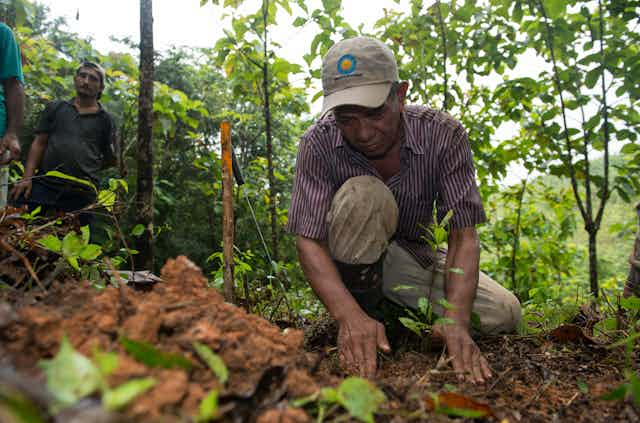
Paying people to replant tropical forests − and letting them harvest the timber − can pay off for climate, justice and environment
Staff Scientist and Director, Agua Salud Project, Smithsonian Institution
Postdoctoral Fellow, Agua Salud Project, Smithsonian Tropical Research Institute, Smithsonian Institution
Associate Professor of Environmental Science, National University of Singapore
Disclosure statement
Jefferson S. Hall receives funding from the US government via the Smithsonian Institution, Stanly Motta, Frank and Kristin Levinson, the Hoch family, U-Trust, and the Mark and Rachel Rohr Foundation.
Katherine Sinacore receives funding from the Mark and Rachel Rohr Foundation, Stanly Motta, Frank and Kristin Levinson, the Hoch family, and the Smithsonian.
Michiel van Breugel receives funding from Singapore’s Ministry of Education and the Future Cities Lab Global Program of the ETH-Singapore Centre, which is funded by National Research Foundation Singapore.
Smithsonian Institution provides funding as a member of The Conversation US.
View all partners
Tropical forest landscapes are home to millions of Indigenous peoples and small-scale farmers . Just about every square meter of land is spoken for, even if claims are not formally recognized by governments .
These local landholders hold the key to a valuable solution as the world tries to slow climate change – restoring deforested tropical landscapes for a healthier future.
Tropical forests are vital to Earth’s climate and biodiversity , but a soccer field-size area of mature tropical forest is burned or cut down about every 5 seconds to clear space for crops and cattle today.
While those trees may be lost, the land still has potential. Tropical forests’ combination of year-round sunshine and high rainfall can lead to high growth rates, suggesting that areas where tropical forests once grew could be valuable sites for reforestation . In fact, a host of international agreements and declarations envision just this.

For reforestation projects to make a dent in climate change, however, they have to work with and for the people who live there.
As forest ecologists involved in tropical forest restoration, we have been studying effective ways to compensate people for the ecosystem services flowing from their land. In a new study , we show how compensation that also allows landholders to harvest and sell some of the trees could provide powerful incentives and ultimately benefit everyone.
The extraordinary value of ecosystem services
Tropical forests are celebrated for their extraordinary biodiversity, with their preservation seen as essential for protecting life on Earth . They are reservoirs of vast carbon stocks, slowing down climate change. However, when tropical forests are cleared and burned, they release copious amounts of carbon dioxide , a greenhouse gas that drives climate change.
Programs offering payments for ecosystem services are designed to help keep those forests and other ecosystems healthy by compensating landholders for goods and services produced by nature that are often taken for granted. For example, forests moderate stream flows and reduce flood risks , support bees and other pollinators that benefit neighboring croplands, and help regulate climate .

In recent years, a cottage industry has grown up around paying people to reforest land for the carbon it can hold. It has been driven in part by corporations and other institutions looking for ways to meet their commitments to cut greenhouse gas emissions by paying projects to reduce or prevent emissions elsewhere.
Early iterations of projects that pay landholders for ecosystem services have been criticized for focusing too much on economic efficiency, sometimes at the expense of social and environmental concerns .

Win-win solutions – where environmental and social concerns are both accounted for – may not be the most economically efficient in the short term, but they can lead to longer-term sustainability as participants feel a sense of pride and responsibility for the project’s success.
That longer-term sustainability is essential for trees’ carbon storage, because many decades of growth is required to build up stored carbon and combat climate change.
Why timber can be a triple win
In the study, we looked at ways to maximize all three priorities – environmental, economic and social benefits – in forest restoration, focusing on infertile land.
It may come as a surprise, but most soils in the tropics are extraordinarily infertile , with concentrations of phosphorus and other essential nutrients an order of magnitude or more lower than in crop-producing areas of the northern hemisphere. This makes restoring tropical forests through reforestation more complex than simply planting trees – these areas also require maintenance.
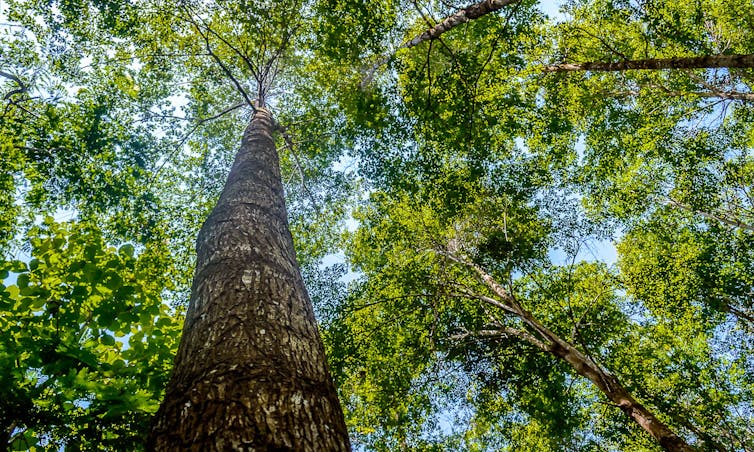
In our study we used some 1.4 million tree measurements taken over 15 years at the Smithsonian Tropical Research Institute ’s Agua Salud site in Panama to project carbon sequestration and potential timber revenues. We looked at naturally regrowing forests, native tree species plantations and an effort to rehabilitate a failed teak plantation by planting high-value native trees known to grow on low-fertility soils to test routes to profitability .
One set of solutions stood out: We found that giving landholders both payments for carbon storage and the ability to generate revenue through timber production on the land could lead to vibrant forests and financial gains for the landholder.

It may seem counterintuitive to suggest timber harvesting when the goal is to restore forests, but allowing landholders to generate timber revenue can give them an incentive to protect and manage planted forests over time.
Regrowing trees on a deforested landscape, whether natural regrowth or plantations, is a net win for climate change, as trees take vast amounts of carbon out of the atmosphere . New forests that are selectively logged or plantations that are harvested in 30 to 80 years can help slow climate change while the world cuts emissions and expands carbon capture technologies.
Reliable payments matter
The structure of the payments is also important. We found that reliable annual carbon payments to rural landlords to regrow forests could match or surpass the income they might otherwise get from clearing land for cattle, thus making the transition to raising trees possible.
When cash payments are based instead on measurements of tree growth, they can vary widely year to year and among planting strategies. With the costs involved, that can stand in the way of effective land management to combat climate change.
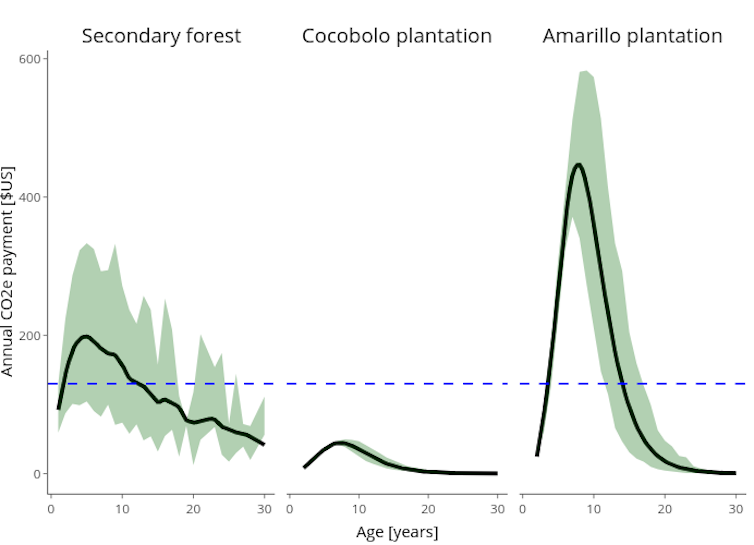
Using flat annual payments instead guarantees a stable income and will help encourage more landholders to enroll. We are now using that method in Panama’s Indigenous Ngäbe-Buglé Comarca . The project pays residents to plant and nurture native trees over 20 years.
Shifting risk to buyers of carbon offsets
From a practical perspective, flat annual carbon payments and other cost-sharing strategies to plant trees shift the burden of risk from participants to carbon buyers, often companies in wealthy countries.
The landholders get paid even if actual growth of the trees falls short, and everyone benefits from the ecosystem services provided.
While win-win solutions may not initially appear to be economically efficient, our work helps to illustrate a viable path forward – where environmental, social and economic objectives can be met.
- Climate change
- Deforestation
- Payment for Ecosystem Services
- Smithsonian
- Tropical forests
- Reforestation
- Greenhouse gas emissions (GHG)

Compliance Lead

Lecturer / Senior Lecturer - Marketing

Assistant Editor - 1 year cadetship

Executive Dean, Faculty of Health

Lecturer/Senior Lecturer, Earth System Science (School of Science)
Find Info For
- Current Students
- Prospective Students
- Research and Partnerships
- Entrepreneurship and Commercialization
- Office of Engagement
Quick Links
- HLA Department Site
- College of Agriculture
- Purdue Extension

2024 HLA Research and Design Retreat
- 2nd place – Jairam Danao , “Genetic Insights into Apple Fruit Mass”
- 1st place – Emmanuel Cooper , “Effect of Buckwheat and Silage Tarps on Sweetpotato Row-Middle Weed Control”
Masters’ Oral Presentations
- 2nd place – Kathleen Zapf , “Investigating the Potential of RGB and Hyperspectral Imaging to Enhance Selection for Cadmium Uptake in Carrots”
- 1st place – Katherine Pivaral , “Markets for Diversifying Agriculture – Case Studies of the US Midwest”
PhD Poster Presentations
- 2nd place – George Meyer , “Investigating the Biochemical Mechanisms Underlying the Phytotoxicity of Juglone”
- 1st place – Dhuha Mohamed , “Characterization of a Salt-Tolerant Wild Type and Salt-Sensitive Cultivated Tomato Genotypes”
PhD Oral Presentations
- 2nd place – Jeanine Arana , “Cover Crops: A Weed Management Option for Plasticulture Strawberry Row-Middles”
- 1st place – Freddie Mildenhall , “Cold Stressed Induced Disruption of the Circadian Clock: A Comparative Study of Arabidiopsis and Tomato”
Photos from the event are available in the HLA Research and Design Retreat 2024 gallery. More photos may be uploaded to the gallery in the near future.
Thanks to the organizing committee, Katherine Pivaral , Vera Vukovic , Camila Ulloa , Dhuha Mohamed , Ishraq Awashra , and Tanvir Dutt for putting on such a wonderful event and Kristina Cooley for supporting them!
- Departmental News & Events
- Awards and Honors
- Graduate Students
- HLA Research and Design Retreat
Share This Article
It is the policy of the purdue university that all persons have equal opportunity and access to its educational programs, services, activities, and facilities without regard to race, religion, color, sex, age, national origin or ancestry, marital status, parental status, sexual orientation, disability or status as a veteran. purdue is an affirmative action institution. this material may be available in alternative formats., purdue sites purdue sites.
- Purdue Homepage
- Employee Portal
- Purdue Today
- Campus Directory
- University Calendar
College of Agriculture Sites College of Agriculture Sites
- College of Ag Homepage
- Education Store
- Extension Events
© 2024 Purdue University | An equal access/equal opportunity university | Copyright Complaints | Maintained by HLA Happenings
If you have trouble accessing this page because of a disability, please contact HLA Happenings at [email protected] | Accessibility Resources
Thank you for visiting nature.com. You are using a browser version with limited support for CSS. To obtain the best experience, we recommend you use a more up to date browser (or turn off compatibility mode in Internet Explorer). In the meantime, to ensure continued support, we are displaying the site without styles and JavaScript.
- View all journals
- Explore content
- About the journal
- Publish with us
- Sign up for alerts
Collection 19 December 2022
Forestry is the combined science and craft behind the plantation, management, restoration, and conservation of forests. From ancient woodlands rich in biodiversity, to intense monocultures for timber production, forests provide vital resources and ecosystem services for wildlife and people alike. Climate change, increased human pressures, and loss of biodiversity have led to a growing interest in active and sustainable forestry practices. Recent years have seen a push for the preservation of natural forests and plantation of new woodland areas, alongside better agricultural, industrial, and urban standards.
This Collection welcomes submissions from all fields of modern forestry and interdisciplinary research, providing new insights into sustainable forest creation, management, and conservation.
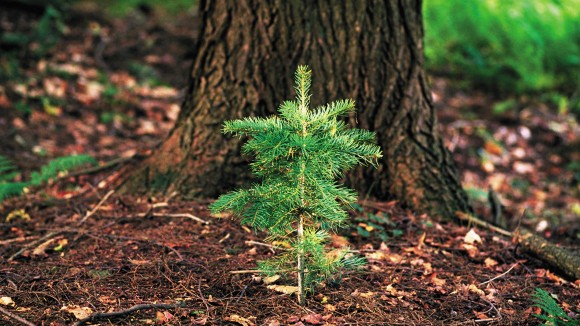
- Asia Khamzina
Korea University, Korea
Chinese Academy of Sciences, China
- Collection content
- How to submit
- About the Guest Editors
- Collection policies
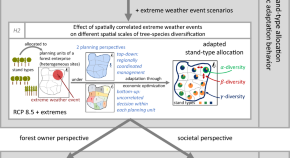
Severe and frequent extreme weather events undermine economic adaptation gains of tree-species diversification
- Jasper M. Fuchs
- Kai Husmann
- Carola Paul
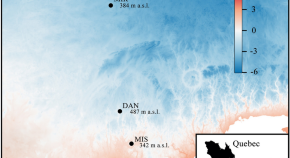
Local adaptation shapes functional traits and resource allocation in black spruce
- R. Silvestro
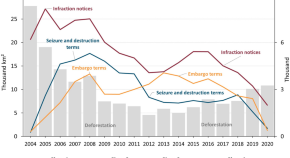
Lessons from the historical dynamics of environmental law enforcement in the Brazilian Amazon
- Felipe S. M. Nunes
- Britaldo S. Soares-Filho
- Marcelo Azevedo Costa
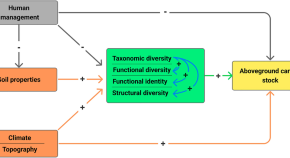
Tree size diversity is the major driver of aboveground carbon storage in dryland agroforestry parklands
- Florent Noulèkoun
- Sylvanus Mensah
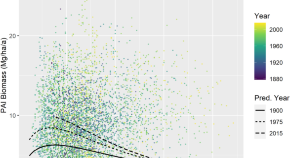
Forest growth in Europe shows diverging large regional trends
- Hans Pretzsch
- Miren del Río
- Peter Biber
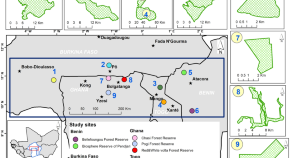
Climate and soil effects on tree species diversity and aboveground carbon patterns in semi-arid tree savannas
- Romain Glèlè Kakaï
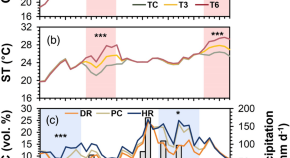
Photosynthetic responses of Larix kaempferi and Pinus densiflora seedlings are affected by summer extreme heat rather than by extreme precipitation
- Gwang-Jung Kim
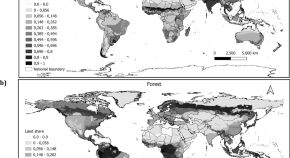
Impacts of commodity prices and governance on the expansion of tropical agricultural frontiers
- Javier Miranda
- Wolfgang Britz
Quick links
- Explore articles by subject
- Guide to authors
- Editorial policies
- SUGGESTED TOPICS
- The Magazine
- Newsletters
- Managing Yourself
- Managing Teams
- Work-life Balance
- The Big Idea
- Data & Visuals
- Reading Lists
- Case Selections
- HBR Learning
- Topic Feeds
- Account Settings
- Email Preferences
Research: Negotiating Is Unlikely to Jeopardize Your Job Offer
- Einav Hart,
- Julia Bear,
- Zhiying (Bella) Ren

A series of seven studies found that candidates have more power than they assume.
Job seekers worry about negotiating an offer for many reasons, including the worst-case scenario that the offer will be rescinded. Across a series of seven studies, researchers found that these fears are consistently exaggerated: Candidates think they are much more likely to jeopardize a deal than managers report they are. This fear can lead candidates to avoid negotiating altogether. The authors explore two reasons driving this fear and offer research-backed advice on how anxious candidates can approach job negotiations.
Imagine that you just received a job offer for a position you are excited about. Now what? You might consider negotiating for a higher salary, job flexibility, or other benefits , but you’re apprehensive. You can’t help thinking: What if I don’t get what I ask for? Or, in the worst-case scenario, what if the hiring manager decides to withdraw the offer?
- Einav Hart is an assistant professor of management at George Mason University’s Costello College of Business, and a visiting scholar at the Wharton School. Her research interests include conflict management, negotiations, and organizational behavior.
- Julia Bear is a professor of organizational behavior at the College of Business at Stony Brook University (SUNY). Her research interests include the influence of gender on negotiation, as well as understanding gender gaps in organizations more broadly.
- Zhiying (Bella) Ren is a doctoral student at the Wharton School of the University of Pennsylvania. Her research focuses on conversational dynamics in organizations and negotiations.
Partner Center
Suggestions or feedback?
MIT News | Massachusetts Institute of Technology
- Machine learning
- Social justice
- Black holes
- Classes and programs
Departments
- Aeronautics and Astronautics
- Brain and Cognitive Sciences
- Architecture
- Political Science
- Mechanical Engineering
Centers, Labs, & Programs
- Abdul Latif Jameel Poverty Action Lab (J-PAL)
- Picower Institute for Learning and Memory
- Lincoln Laboratory
- School of Architecture + Planning
- School of Engineering
- School of Humanities, Arts, and Social Sciences
- Sloan School of Management
- School of Science
- MIT Schwarzman College of Computing
Four from MIT named 2024 Knight-Hennessy Scholars
Press contact :.

Previous image Next image
MIT senior Owen Dugan, graduate student Vittorio Colicci ’22, predoctoral research fellow Carine You ’22, and recent alumna Carina Letong Hong ’22 are recipients of this year’s Knight-Hennessy Scholarships. The competitive fellowship, now in its seventh year, funds up to three years of graduate studies in any field at Stanford University. To date, 22 MIT students and alumni have been awarded Knight-Hennessy Scholarships.
“We are excited for these students to continue their education at Stanford with the generous support of the Knight Hennessy Scholarship,” says Kim Benard, associate dean of distinguished fellowships in Career Advising and Professional Development. “They have all demonstrated extraordinary dedication, intellect, and leadership, and this opportunity will allow them to further hone their skills to make real-world change.”
Vittorio Colicci ’22
Vittorio Colicci, from Trumbull, Connecticut, graduated from MIT in May 2022 with a BS in aerospace engineering and physics. He will receive his master’s degree in planetary sciences this spring. At Stanford, Colicci will pursue a PhD in earth and planetary sciences at the Stanford Doerr School of Sustainability. He hopes to investigate how surface processes on Earth and Mars have evolved through time alongside changes in habitability. Colicci has worked largely on spacecraft engineering projects, developing a monodisperse silica ceramic for electrospray thrusters and fabricating high-energy diffraction gratings for space telescopes. As a Presidential Graduate Fellow at MIT, he examined the influence of root geometry on soil cohesion for early terrestrial plants using 3D-printed reconstructions. Outside of research, Colicci served as co-director of TEDxMIT and propulsion lead for the MIT Rocket Team. He is also passionate about STEM engagement and outreach, having taught educational workshops in Zambia and India.
Owen Dugan, from Sleepy Hollow, New York, is a senior majoring in physics. As a Knight-Hennessy Scholar, he will pursue a PhD in computer science at the Stanford School of Engineering. Dugan aspires to combine artificial intelligence and physics, developing AI that enables breakthroughs in physics and using physics techniques to design more capable and safe AI systems. He has collaborated with researchers from Harvard University, the University of Chicago, and DeepMind, and has presented his first-author research at venues including the International Conference on Machine Learning, the MIT Mechanistic Interpretability Conference, and the American Physical Society March Meeting. Among other awards, Dugan is a Hertz Finalist, a U.S. Presidential Scholar, an MIT Outstanding Undergraduate Research Awardee, a Research Science Institute Scholar, and a Neo Scholar. He is also a co-founder of VeriLens, a funded startup enabling trust on the internet by cryptographically verifying digital media.
Carina Letong Hong ’22
Carina Letong Hong, from Canton, China, is currently pursuing a JD/PhD in mathematics at Stanford. A first-generation college student, Hong graduated from MIT in May 2022 with a double major in mathematics and physics and was inducted into Sigma Pi Sigma, the physics honor society. She then earned a neuroscience master’s degree with dissertation distinctions from the University of Oxford, where she conducted artificial intelligence and machine learning research at Sainsbury Wellcome Center’s Gatsby Unit. At Stanford Law School, Hong provides legal aid to low-income workers and uses economic analysis to push for law enforcement reform. She has published numerous papers in peer-reviewed journals, served as an expert referee for journals and conferences, and spoken at summits in the United States, Germany, France, the U.K., and China. She was the recipient of the AMS-MAA-SIAM Morgan Prize for Outstanding Research, the highest honor for an undergraduate in mathematics in North America; the AWM Alice T. Schafer Prize for Mathematical Excellence, given annually to an undergraduate woman in the United States; the Maryam Mirzakhani Fellowship; and a Rhodes Scholarship.
Carine You ’22
Carine You, from San Diego, California, graduated from MIT in May 2022 with bachelor’s degrees in electrical engineering and computer science and in mathematics. Since graduating, You has worked as a predoctoral research assistant with Professor Amy Finkelstein in the MIT Department of Economics, where she has studied the quality of Medicare nursing home care and the targeting of medical screening technologies. This fall, You will embark on a PhD in economic analysis and policy at the Stanford Graduate School of Business. She wishes to address pressing issues in environmental and health-care markets, with a particular focus on economic efficiency and equity. You previously developed audio signal processing algorithms at Bose, refined mechanistic models to inform respiratory monitoring at the MIT Research Laboratory of Electronics, and analyzed corruption in developmental projects in India at the World Bank. Through Middle East Entrepreneurs of Tomorrow, she taught computer science to Israeli and Palestinian students in Jerusalem and spearheaded an online pilot expansion for the organization. At MIT, she was named a Burchard Scholar.
Share this news article on:
Related links.
- Knight-Hennessy Scholars
Related Topics
- Awards, honors and fellowships
- Undergraduate
- Graduate, postdoctoral
- Aeronautical and astronautical engineering
- Electrical Engineering & Computer Science (eecs)
- Mathematics
- Research Laboratory of Electronics
- School of Humanities Arts and Social Sciences
Related Articles

Three from MIT named 2023 Knight-Hennessy Scholars

Six from MIT Named 2022 Knight-Hennessy Scholars

Carina Letong Hong named a 2022 Rhodes Scholar for China
Previous item Next item
More MIT News

Elaine Liu: Charging ahead
Read full story →

Scientists use generative AI to answer complex questions in physics

New tool empowers users to fight online misinformation
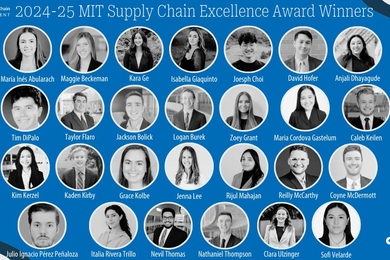
2024 MIT Supply Chain Excellence Awards given to 35 undergraduates

Faces of MIT: Reimi Hicks

John Joannopoulos receives 2024-2025 Killian Award
- More news on MIT News homepage →
Massachusetts Institute of Technology 77 Massachusetts Avenue, Cambridge, MA, USA
- Map (opens in new window)
- Events (opens in new window)
- People (opens in new window)
- Careers (opens in new window)
- Accessibility
- Social Media Hub
- MIT on Facebook
- MIT on YouTube
- MIT on Instagram

IMAGES
VIDEO
COMMENTS
The authors show China's forests can sequester 172.3 million tons of carbon per year in biomass by 2100, with an additional 28.1 million tons from improved management practices, but neglecting ...
Using winter diet composition and forage plant availability to determine browse selection and importance for moose ( Alces alces) in a landscape modified by industrial forestry. Kai Breithaupt and others. Between 2000 and 2015, moose ( Alces alces L.) populations within some areas of north-central British Columbia, Canada declined by 70%.
The Journal of Forestry Research is an international platform for original theoretical, experimental research and technical reviews on forestry.. Welcomes review articles, original papers, commentary, perspective and short communications etc. with high academic quality.; Publishes scientific articles related to forestry for a broad range of international scientists, forest managers and ...
SAF Review Article Collection. The Society of American Foresters invites you to browse review articles collated from the journals of Forest Science and Journal of Forestry. Featured reviews discuss topics of wide general interest, or hot topics, in forestry research and practices. Explore the collection
Assessing forest cover changes and fragmentation in the Himalayan temperate region: implications for forest conservation and management. Kaleem Mehmood. Shoaib Ahmad Anees. Wesam Atef Hatamleh. Original Paper 27 April 2024 Article: 82.
Journal of Forest Research publishes original articles, reviews, and short communications. It covers all aspects of forest research, both basic and applied, with the aim of encouraging international communication between scientists in different fields who share a common interest in forest science.
Explore a collection of the most read and most cited articles making an impact in Forestry published within the past two years.This collection will be continuously updated with the journal's leading articles so be sure to revisit periodically to see what is being read and cited.
2. Novel ideas or approaches to important challenges in forest ecology and management; 3. Studies that address a population of interest beyond the scale of single research sites (see the editorial, Three key points in the design of forest experiments, Forest Ecology and Management 255 (2008) 2022-2023); 4. Review Articles on timely, important ...
Trees, Forests and People publishes peer-reviewed papers across this full domain of tree- and forest-related science and practice. To ensure maximum value of knowledge, all papers are published open-access to be read and applied by people around the world. ... Research articles are full-length papers based on original data and analysis; Review ...
Terrestrial laser scanning vs. manual methods for assessing complex forest stand structure: a comparative analysis on plenter forests. European Journal of Forest Research is a global Journal that publishes a broad array of subjects related to wood and forests worldwide.
Journal metrics Editorial board. Journal of Sustainable Forestry publishes peer-reviewed, original research on forest science. While the emphasis is on sustainable use of forest products and services, the journal covers a wide range of topics from the underlying biology and ecology of forests to the social, economic and policy aspects of forestry.
Introduction. Sustainable forest management is a traditional research field with an outstanding history. Since Von Carlowitz (Citation 1713) practically invented the term sustainability in the context of forest management, the general understanding of what sustainable forest management (SFM) is, has undertaken an evolutionary process.Between 1980 and 1990 research communities increasingly ...
Explore the latest full-text research PDFs, articles, conference papers, preprints and more on FORESTRY RESEARCH. Find methods information, sources, references or conduct a literature review on ...
Forest understory vegetation study: current status and future trends. Forestry Research 3:6 doi: 10.48130/FR-2023-0006. <p>Understory vegetation accounts for a large proportion of floral diversity. It provides various ecosystem functions and services, such as productivity, nutrient cycling, organic matter decomposition and ecosystem self ...
Forest Ecosystems is an open access, peer-reviewed journal publishing scientific communications from any discipline that can provide interesting contributions about the structure and dynamics of "natural" and "domesticated" forest ecosystems, and their services to people. The journal welcomes innovative science as well as application-oriented ...
Journal Profile. Forestry Research (e-ISSN 2767-3812) is an open access, online-only journal devoted to publishing research on all areas of forestry. Find out further information on the journal aims and scope here. Journal information.
Oxford University Press is a department of the University of Oxford. It furthers the University's objective of excellence in research, scholarship, and education by publishing worldwide
The researchers are also pursuing other autonomous efforts such as planting seedlings. Although logging may always need human oversight, automating certain steps could make the process safer and ...
The impact of climate warming on wetland ecosystem is a current focal point in ecological research. This study chose Napahai wetland, a typical plateau wetland in northwest Yunnan province as study site to understand the growth and survival strategies of emergent plants in plateau wetland under climate warming conditions. Using open-top chambers (OTCs) to simulate warming in three treatment ...
Tropical forests are vital to Earth's climate and biodiversity, but a soccer field-size area of mature tropical forest is burned or cut down about every 5 seconds to clear space for crops and ...
Though decades behind the better-known Great Barrier Reef in terms of public awareness and resourcing, the Great Southern Reef is at last being recognised for the vital - and increasingly threatened - role it plays in biodiversity, ecosystem services and climate change mitigation. UWA research has been critical to that shift.
The HLA Research and Design Retreat was held May 9 at the John S. Wright Forestry Center. Organized by the HLA Graduate Students with the support of Kristina Cooley, the retreat gave the graduate students and visiting scholars an opportunity to present their research to their fellow HLA graduate students, visiting scholars, faculty and staff.They invited undergraduate Landscape Architect ...
Add articles to your saved list and come back to them any time. Bauxite miner Alcoa will spend $15 million boosting research of the jarrah forest it mines, mostly in catchments vital to supplying ...
Urban Forestry and Urban Greening is a refereed, international journal aimed at presenting high-quality research with urban and peri-urban woody and non-woody vegetation and its use, planning, design, establishment and management as its main topics. Urban Forestry and Urban Greening concentrates on all tree-dominated (as joint together in urban forests) as well as other green resources in and ...
This Collection invites research in modern forestry and interdisciplinary, providing new insights into sustainable forest creation, management, and ...
The authors explore two reasons driving this fear and offer research-backed advice on how anxious candidates can approach job negotiations. Post. Post. Share. Annotate. Save. Print.
Caption. Clockwise from top left: Vittorio Colicci, Owen Dugan, Carine You, and Carina Letong Hong. Credits. Photos courtesy of the Knight-Hennessy Scholars. MIT senior Owen Dugan, graduate student Vittorio Colicci '22, predoctoral research fellow Carine You '22, and recent alumna Carina Letong Hong '22 are recipients of this year's ...